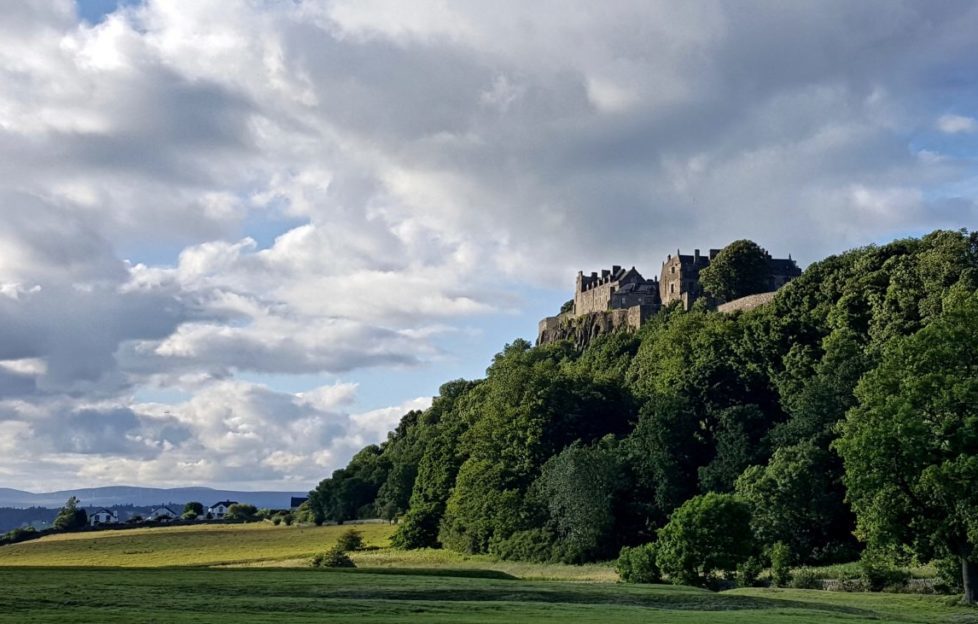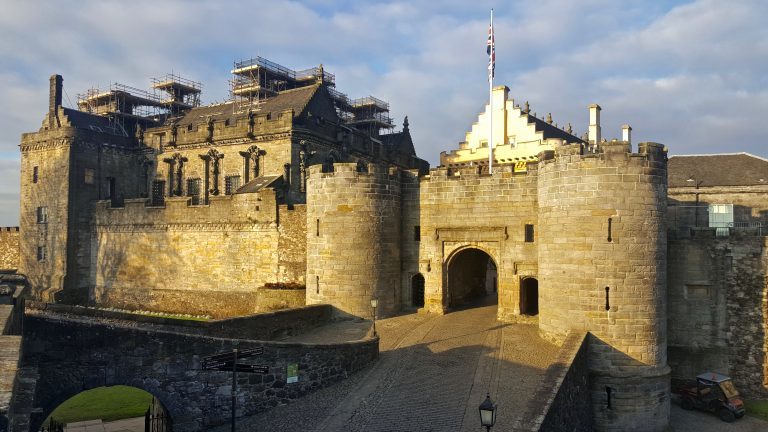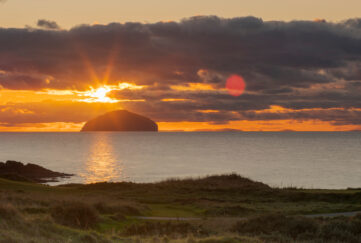Stirling Castle: The Crucible Of Scotland
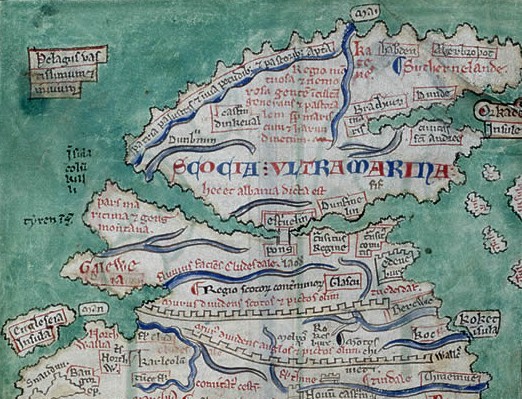

David Weinczok
David Weinczok investigates the historical importance of Stirling Castle, the brooch that clasps together the Highlands and Lowlands
It was recently the anniversary of the Battle of Bannockburn, where Robert Bruce’s 7,000 triumphed against Edward II’s 20,000 over two bloody days – June 23 and 24, 1314.
Most readers will know the shape of the battle well, and there is no question of its significance as a defining moment in the Scotland’s story. The anniversary got me thinking… of all the places for Bruce, and Wallace before him, to make his stand – why Stirling?
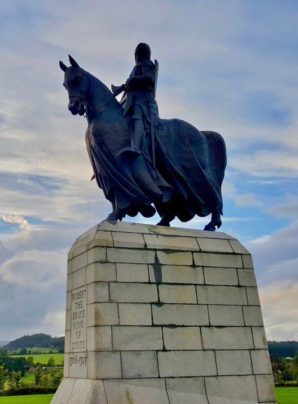
Robert the Bruce still watches over the Battle of Bannockburn site
Why, against nigh-impossible odds, choose to face their foe here?
Making Allies Of The Land
At Stirling you automatically have Scotland’s most formidable warrior on your side – the land itself.
For over 2,000 years Stirling has been the crucible of Scotland, a centre of gravity which, through the whims of nature, has decided the nation’s fate time and time again.
The waters of the Firth of Firth channel all invaders from the south into the centre of the country, while hills, bog and arduous ground prevent armies from going around the west.
The Romans knew this when building their road north. Their road passes through the eye of this geographical needle.
It’s a choke point on a national scale. In the words of 14th-century chronicler Walter of Gusiborough, “There was, indeed, no better place in all the land to deliver the English into the hands of the Scots, and so many into the power of so few.”
The strategic supremacy of Stirling is illustrated in Matthew Paris’ 13th-century map of the British Isles, shown at the top of this article. In this land of rivers and castles, one part of the map stands out. Stirling is depicted as a lone bridge guarding the gates of Scotland north of the Forth-Clyde line.
Standing sentinel above that all-important crossing is, of course, the royal fortress of Stirling Castle. If you control the bridge, you control Scotland – and to control the bridge, you had to control the castle.
For this reason, it can confidently be said that Stirling Castle is the most important castle in all Scotland.
- A lofty vantage point…
- … with impressive defences
Taking Back Control
Robert Bruce knew the importance of Stirling Castle. By mid-1313 it was one of only three castles in the land whose English garrisons continued to defy his sieges.
Sieges were long, mind-numbingly boring tasks to which the Scots were never particularly well-suited. Edward Bruce, the king’s brother, was so eager to be done with it that he struck an extraordinary bargain with Philip Moubray, the commander of Stirling’s garrison.
If Edward II sent relief by Midsummer’s Day, 1314, the English would retain the castle. If no reinforcements arrived, the castle would surrender to the Scots.
From that point on, battle was inevitable. Edward II would not tolerate the loss of face that would come from failing to relieve his lords in Scotland.
Against The Odds
Edward II raised the call to arms, and some 20,000, including perhaps 3,000 heavy horse, answered.
It was the largest army to march north since Edward I oversaw the defeat of Wallace at Falkirk in 1298. In the open field, Bruce’s 7,000 stood no chance at all.
The English army’s target was Stirling Castle, and the battle would be fought in the castle’s long shadow.
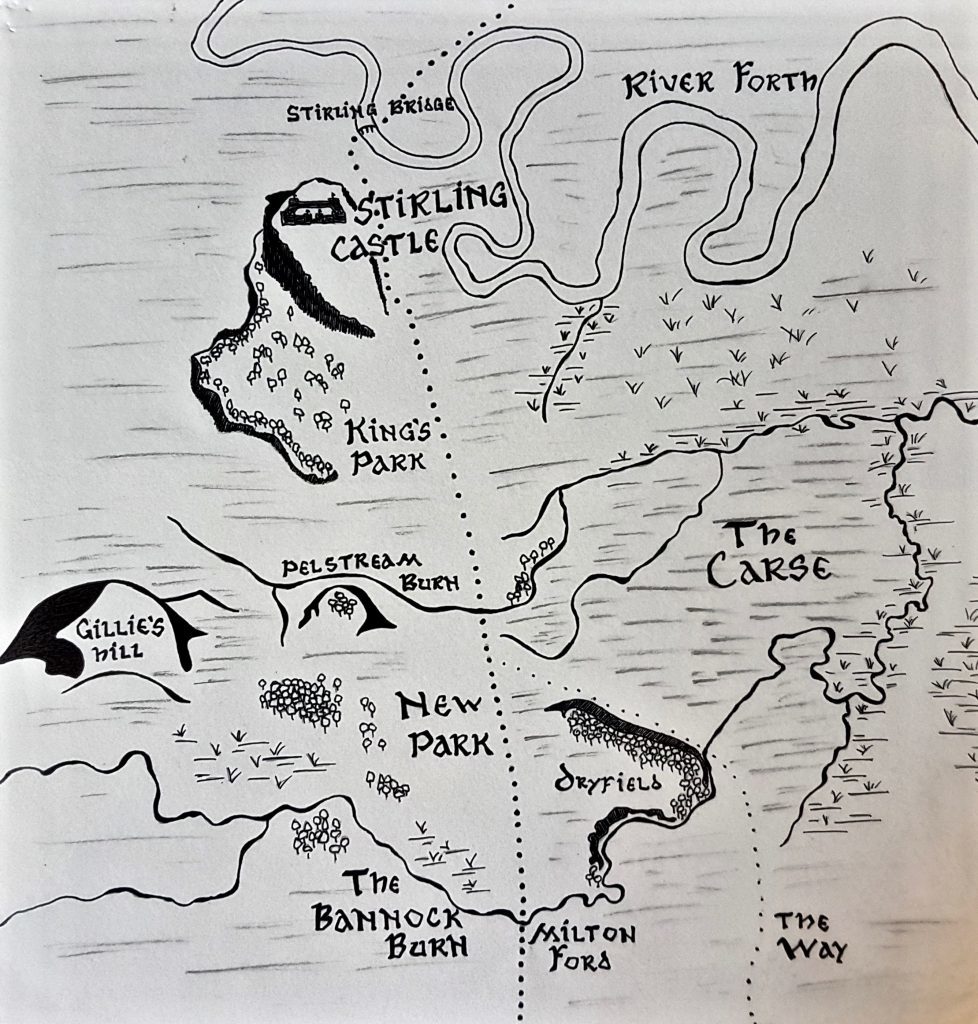
A hand-drawn map of the area around the battlefield shows the land’s natural defences
It would prove a noose, which Edward’s great war machine walked straight into.
The Scots were armed with 15-foot pikes levelled straight ahead in great bristling masses called schiltrons.
Forced as they were from the main road into the boggy morass between the Pelstream and Bannock burns, it mattered little whether the English brought 20,000 men or 100,000. The Scots simply had to push until there was nothing left standing to push against.
The very land of Stirling took care of the rest. The waters of the Bannock Burn consumed the mighty host with brutal indifference.
It was said that so many bodies filled the burn that one could cross without getting wet feet.
Stirling Bridge (1297), Bannockburn (1314), Sauchieburn (1488), Sheriffmuir (1715) were all fought for control of the linchpin of Scotland. It’s little wonder Stirling has been called the brooch that clasps the Highlands and Lowlands together.
If you want to understand the course of Scotland’s history, standing on the ramparts of Stirling Castle. The land of battles unfolding before you is the single best class you can attend.
Discover more of David’s favourite castles and
their history here on The Scots Magazine and
don’t forget to check out his blog The Castle Hunter


